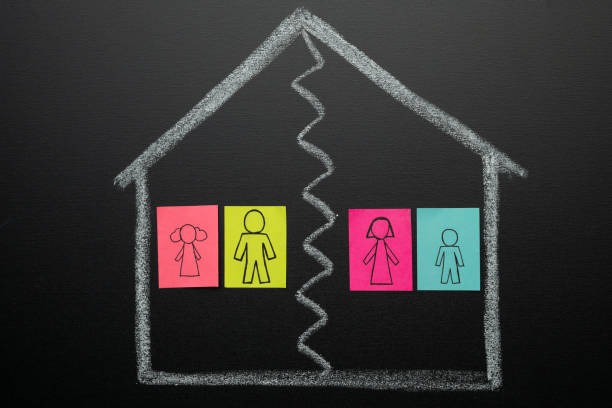Key Takeaways
- Children’s emotional and behavioral reactions to divorce can be significant, but proactive and compassionate parenting can help ease their journey.
- Addressing children’s age-specific needs, fostering healthy communication, and establishing consistent routines allow families to adapt more smoothly.
- Effective co-parenting, professional counseling, and the use of support resources are instrumental in protecting children’s mental health and future resilience.
- Seeking help early and maintaining a focus on children’s well-being can transform the divorce process into an opportunity for growth.
What Happens to Children When Parents Divorce?
The reality of divorce places children at the center of profound changes in their everyday lives. Rather than just a shift in living arrangements, children often perceive divorce as a complete rearrangement of their personal world. Parents may notice their kids feeling anxious about what will happen to them—will they have to move, change schools, or lose contact with friends or extended family? These anxieties can affect behavior, school performance, and even physical health. Statistics reveal that more than 40% of children in the United States will see their parents separate before the age of 18, highlighting just how common this experience is. Guidance found at robinsonandhenry.com/services/family-law/divorce/ offers families structured approaches to navigate these obstacles, ensuring that the interests of children remain at the forefront throughout every stage of the process.
The way a child responds to divorce can depend on a mix of family circumstances, individual temperament, and how caregivers handle the situation. Children’s ability to adjust is affected by both the intensity of parental conflict and the level of support they receive. When managed poorly, ongoing tension and uncertainty can contribute to anxiety, withdrawal from activities, anger, and academic setbacks. Families play a powerful role in setting the tone for how children experience these transitions, making a compassionate and informed response critical for their emotional and social development.
Recognizing Children’s Needs by Age and Stage
Just as each child is unique, so is their reaction to divorce, shaped closely by their developmental stage. Young children—like preschoolers—usually understand the world in concrete ways and may fear abandonment if a parent moves out. Their worries can be expressed through regression: bedwetting, clinginess, or tantrums. School-aged children are old enough to interpret the situation but often blame themselves or internalize guilt, believing they somehow caused the breakup. Adolescents and teens might become withdrawn or rebellious as they try to make sense of the new family landscape while also navigating their own journey toward independence.
Tailoring explanations and support to each child’s maturity and emotional capacity is crucial. As the Child Mind Institute describes, parents can help by inviting discussion, respecting each child’s unique feelings, and empowering them to make small decisions, like arranging their new rooms or selecting routines. Giving children an appropriate sense of involvement restores control at a time when much feels unsettled, making transitions less traumatic and more collaborative.
Effective Communication During Family Transitions
Communication during and after divorce should be rooted in honesty and reassurance. Children often need information about what to expect and, just as importantly, what has not changed, such as the unwavering love and support of both parents. If possible, presenting news of the divorce together establishes consistency and minimizes confusion or the sense that they must choose sides.
- Use clear, direct words while avoiding blaming language or unnecessary details about the split.
- Let children ask questions, responding openly and without judgment.
- Affirm that their feelings are valid—anger, sadness, fear, and relief are all “normal” responses to family change.
- Maintain open dialogue as time passes; children’s emotions may evolve as the situation becomes more real.
Maintaining this open channel ensures children are not left alone to interpret or internalize family changes, reducing the chances for lingering uncertainty or resentment.
Benefits of Successful Co-Parenting
Co-parenting is about more than sharing physical custody—it’s about crafting a supportive atmosphere where children feel loved and protected by both parents. Numerous studies indicate that children whose parents can work together—even if they are no longer partners—tend to excel academically and emotionally. Predictable schedules, collaborative decision-making, and clear boundaries prevent confusion and help children adjust more smoothly.
Joint agreements about bedtimes, academic expectations, discipline, and holidays go a long way in creating stability. When emotions run high and face-to-face interaction is difficult, structured communication tools like family calendars or parenting apps can bridge the gap. Children benefit most when they experience similar environments in both homes, minimizing the stress that comes with uncertainty or divided loyalties.
Prioritizing Emotional Support and Mental Health
Emotional support can be the difference between children thriving and struggling after their parents separate. Parents may notice signs of stress in the form of nightmares, loss of interest in regular activities, irritability, or withdrawal. It’s natural for children to grieve the loss of their family as it was, but persistent symptoms should prompt parents to seek help. Teachers, pediatricians, and relatives can serve as extra layers of support, but sometimes what’s really needed is professional intervention.
Timely access to counseling and peer groups—many of which exist specifically for children navigating family change—enables children to share their stories with others facing similar situations. The sense of belonging and understanding found in these groups, and the professional guidance of a therapist, have lasting positive effects, allowing kids to express worries safely and develop valuable coping skills.
Practical Tips for Parents During Divorce
- Establish predictable routines to give children a sense of security—these familiar patterns are comforting in times of change.
- Reiterate your love frequently and remind children that the divorce is not their fault—children often shoulder inappropriate guilt.
- Refrain from talking negatively about your ex-partner or using your children to relay messages; adult conflict should remain between adults.
- Support children’s ongoing connections with both sides of the family, including extended relatives and friends.
- Monitor for behavior changes—academic decline, withdrawal, or aggression are signs that additional support may be needed.
Taking these steps offers children reassurance, helps maintain their self-esteem, and builds a more positive atmosphere for the family as it adapts to its new structure.
Looking Ahead: Building Resilience After Divorce
While undeniably challenging, divorce doesn’t have to define a child’s future. With the right blend of empathy, routine, community, and professional guidance, most children move beyond the initial difficulties, gaining new strengths and deeper relationships along the way. Parents who focus on open communication and responsiveness to their children’s evolving needs set the stage for long-term success.
Ultimately, seeking help when children need it, encouraging honest dialogue about feelings, and maintaining strong family bonds are all positive demonstrations of love and commitment. Divorce can mark the beginning of a new chapter—one where resilience, understanding, and hope lead the way.






